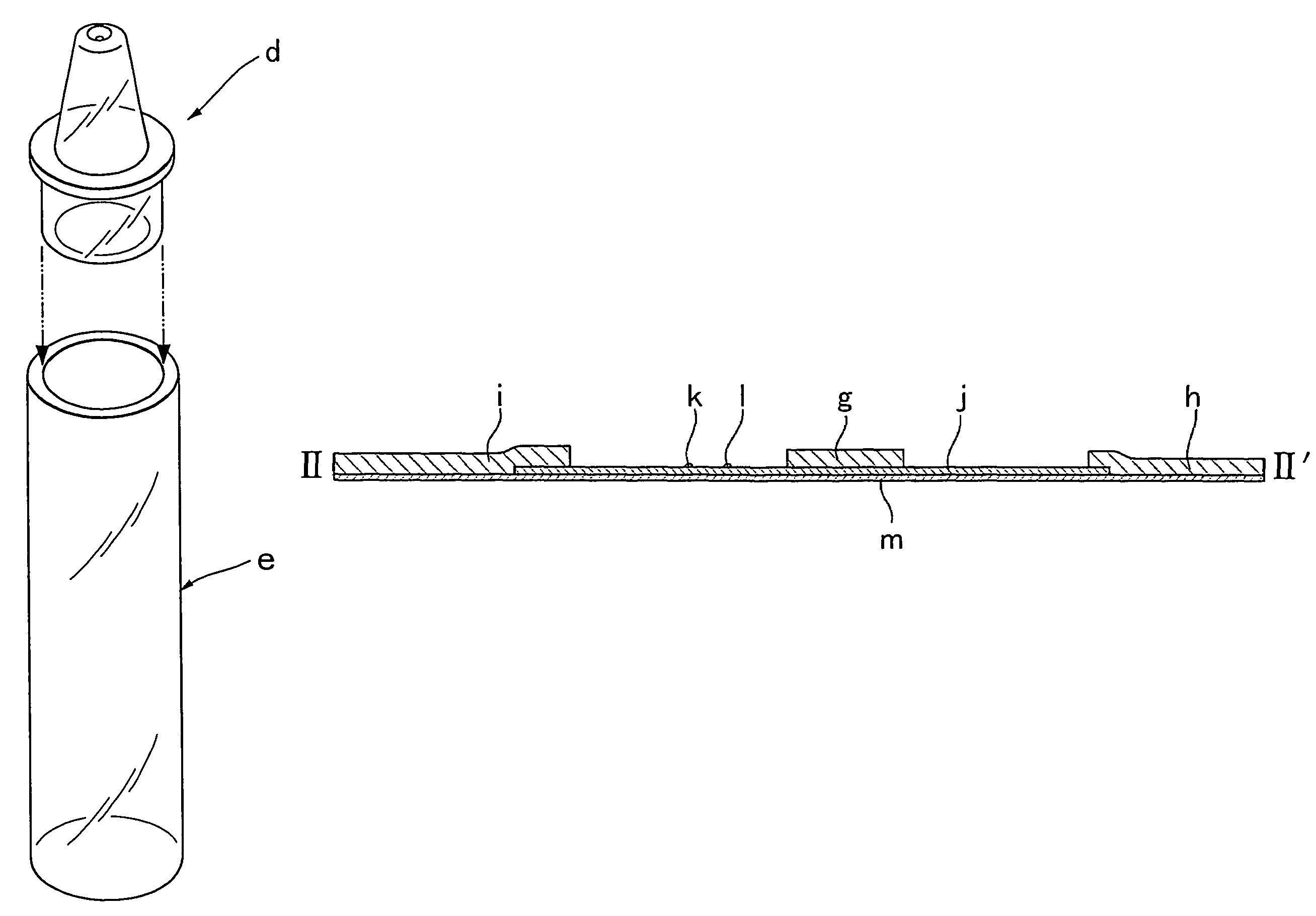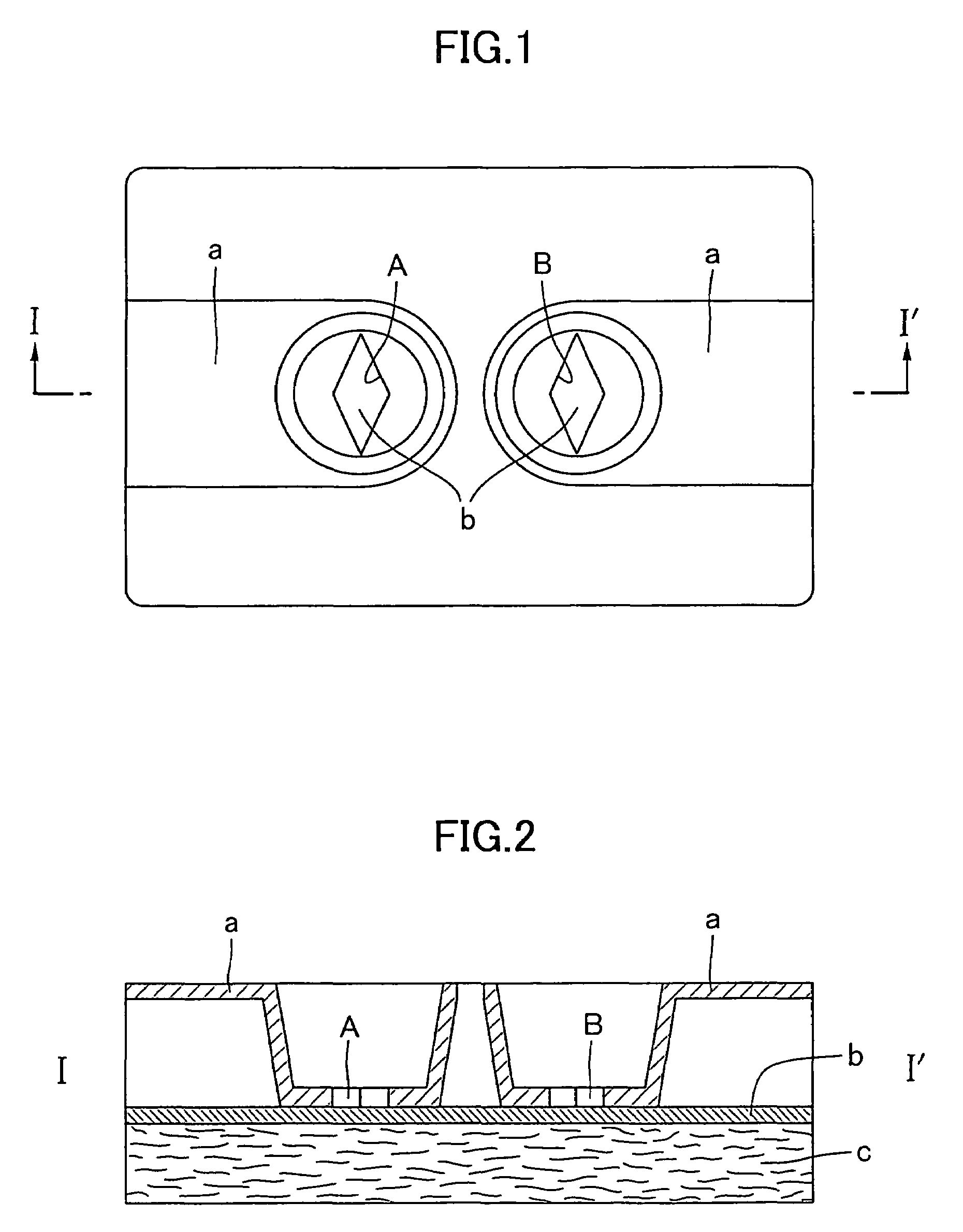Simple membrane assay method and kit
a technology of simple membrane and assay kit, which is applied in the field of assay method, can solve the problems of serious consequences, false positive information on the patient, and aggravating the condition of the disease to more severe, and achieves the effect of highly reliable and simple test method
- Summary
- Abstract
- Description
- Claims
- Application Information
AI Technical Summary
Benefits of technology
Problems solved by technology
Method used
Image
Examples
example
Example 1
Detection of Influenza Virus by Flow-Through Type Immunochromatographic Assay Method
1. Preparation of Monoclonal Antibody
(1) Preparation of Anti-Influenza a Type Virus NP Monoclonal Antibody (Mouse)
[0061]A spleen was ablated from a BALB / c mouse which had been immunized with purified influenza A type virus antigen and kept for a certain period, and it was fused with mouse myeloma cell (P3×63) by the method of Kohler et al. (Kohler et al., Nature, Vol, 256, pp 495-497 (1975)).
[0062]The obtained fused cell (hybridoma) was kept in an incubator at 37° C. and purification (monocloning) of the cell was performed while confirming the antibody activity of the supernatant by ELISA using influenza A type virus NP antigen solid phase plate.
[0063]Two of the obtained cells were each administered intraperitoneally to a pristane-treated BALB / c mouse, after about 2 weeks, each ascites containing an antibody was collected. IgG was purified from each of the obtained ascites by ammonium sulfat...
example 2
Detection of Influenza Virus by Lateral-Flow Type Immunochromatographic Assay Method
1. Preparation of Monoclonal Antibody
(1) Preparation of Anti-Influenza A virus NP Monoclonal Antibody (Mouse)
[0084]This antibody was prepared in the same manner as the method described in [Example 1] 1.(1).
(2) Preparation of Anti-Influenza B Type Virus NP Monoclonal Antibody (Mouse)
[0085]This antibody was prepared in the same manner as the method described in [Example 1] 1.(2).
2. Preparation of Labeled Anti-Influenza Antibody
(1) Preparation of Labeled Anti-Influenza A Type Antibody
[0086]20 mg of one kind of the purified anti-influenza A type virus NP monoclonal antibodies was dialyzed with 0.1 M acetate buffer (pH 3.8) followed by addition of 10 mg of pepsin and Fab′ digestive treatment was performed for one hour at 37° C. The treated solution was fractionated through ultrogel AcA44 column to yield purified fraction of anti-influenza A type F(ab′)2. The thus obtained fraction was concentrated up to a...
PUM
| Property | Measurement | Unit |
|---|---|---|
| pore size | aaaaa | aaaaa |
| particle retention size | aaaaa | aaaaa |
| wt % | aaaaa | aaaaa |
Abstract
Description
Claims
Application Information
 Login to View More
Login to View More - R&D
- Intellectual Property
- Life Sciences
- Materials
- Tech Scout
- Unparalleled Data Quality
- Higher Quality Content
- 60% Fewer Hallucinations
Browse by: Latest US Patents, China's latest patents, Technical Efficacy Thesaurus, Application Domain, Technology Topic, Popular Technical Reports.
© 2025 PatSnap. All rights reserved.Legal|Privacy policy|Modern Slavery Act Transparency Statement|Sitemap|About US| Contact US: help@patsnap.com



